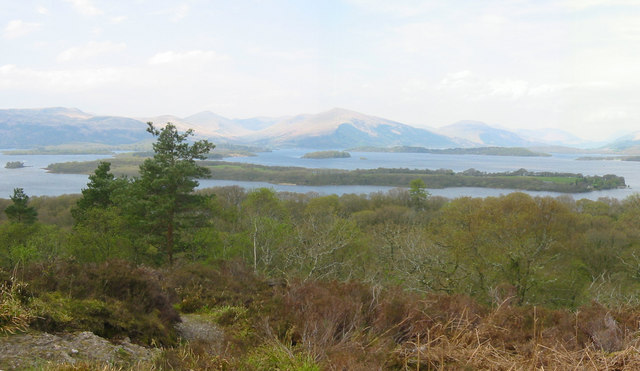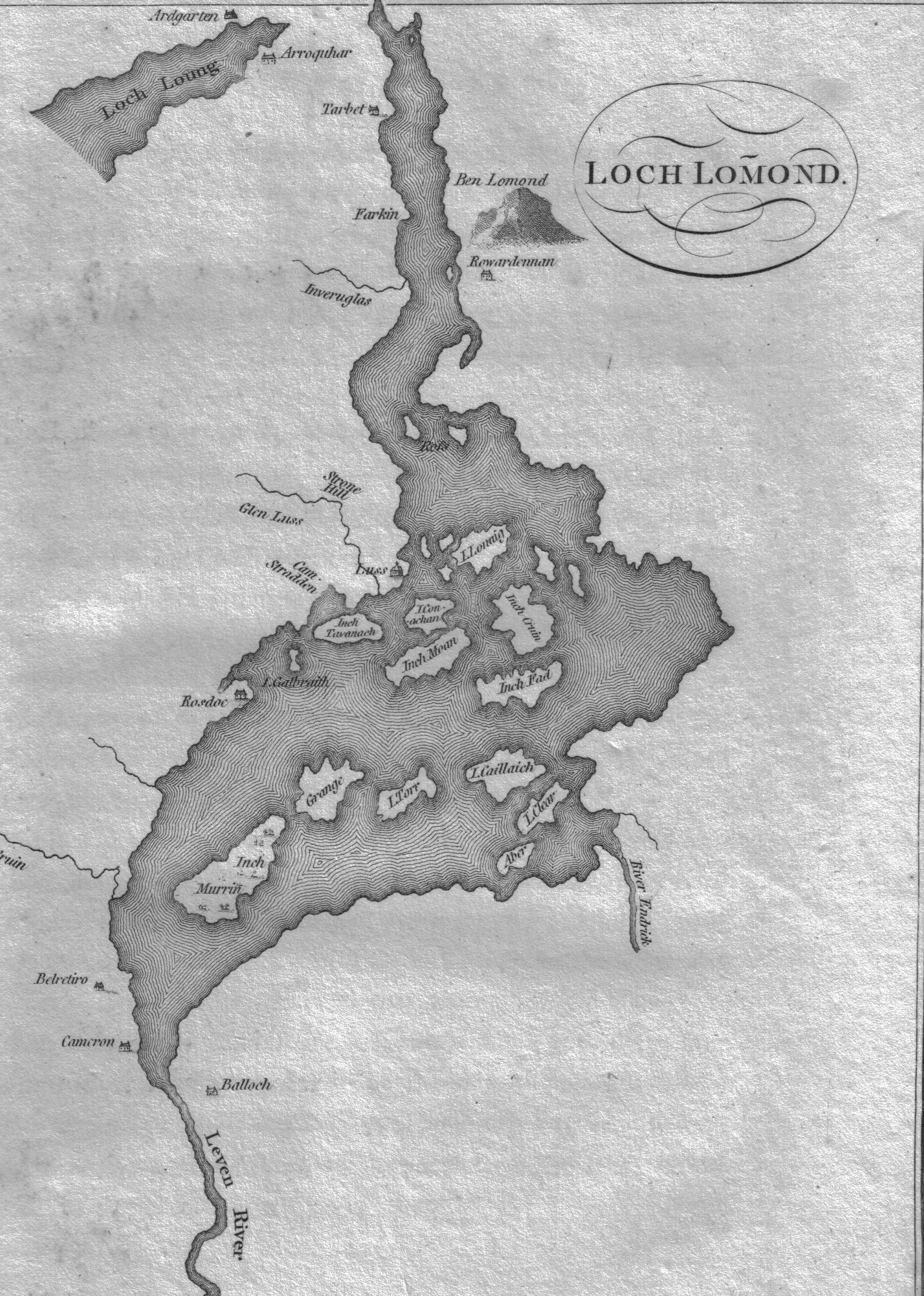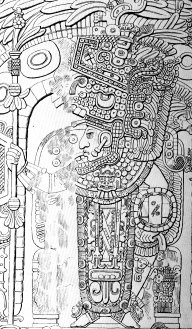|
Kentigerna
Caintigern (died 734), or Saint Kentigerna, was a daughter of Cellach Cualann, King of Leinster. Her feast is listed in the ''Aberdeen Breviary'' for 7 January. Her husband is said to have been Feriacus regulus of Monchestre, who possibly is the same person as Feradach, grandson of Artúr of Dál Riata. Along with her brother St. Comgán and her son St. Fillan (Fáelán), the widowed Caintigern is said to have lived as a hermit, first in Strath Fillan, then in the Lennox, on the island of Inchcailloch on Loch Lomond. References External links * http://medievalscotland.org/kmo/AnnalsIndex/Feminine/Caintigern.shtml Sources * Alan Orr Anderson Alan Orr Anderson (1879–1958) was a Scottish historian and compiler. The son of Rev. John Anderson and Ann Masson, he was born in 1879. He was educated at Royal High School (Edinburgh), Royal High School, Edinburgh, and the University of Ed ..., ''Early Sources of Scottish History A.D 500–1286'', volume 1. Reprinted with ... [...More Info...] [...Related Items...] OR: [Wikipedia] [Google] [Baidu] |
Inchcailloch
Inchcailloch ( gd, Innis na Cailleach) is an islet on Loch Lomond in Scotland. It is at its highest point. It is also known to some as Inchebroida. The name Inchcailloch means "Isle of the old woman" or "Isle of the Cowled (Hooded) Woman" in the Scottish Gaelic language. Saint Kentigerna went to Scotland from Ireland to preach and spread Christianity and the island is thought to be named after her. Geography and geology Inchmurrin, Creinch, Torrinch, and Inchcailloch all form part of the Highland boundary fault. There is a burial ground in the north of the island, and a bay, Port Bawn ( gd, Port Bàn; en, White Port), in the south. Like many of the Loch Lomond islands, it is quite heavily wooded. Transport There is a passenger ferry across the short channel separating it from Balmaha on the mainland. As a result, it receives more visitors than most of the Loch Lomond islands, currently 20,000 visitors per year. There is a camp site in the south at Port Bawn and a nature ... [...More Info...] [...Related Items...] OR: [Wikipedia] [Google] [Baidu] |
Fillan
Saint Fillan, Filan, Phillan, Fáelán (Old Irish) or Faolán (modern Gaeilge & Gàidhlig) is the name of an eighth century monk from Munster, who having studied at Taghmon Abbey, traveled to Scotland and settled at Strath Fillan. Name The name Fillan probably means "little wolf" in Irish / Gaeilge, being formed on a diminutive of ''faol'', an old word for the animal. In Irish/Gaeilge the name Faolán is pronounced 'Fway-lawn'. Life St. Fillan of Munster, the son of Feriach, grandson of Cellach Cualann, King of Leinster, received the monastic habit at the Abbey of Fintán of Taghmon in Wexford and came to Scotland from Ireland in 717 as a hermit along with his Irish princess-mother St. Kentigerna, and his Irish prince-uncle St. Comgan. They settled at Loch Duich. After spending some time with his uncle Saint Comgan at Lochalsh, where Killilan (Kilfillan) bears his name, the saint devoted himself to the evangelization of the district of Perthshire round Strath Fillan, which i ... [...More Info...] [...Related Items...] OR: [Wikipedia] [Google] [Baidu] |
Cellach Cualann
Cellach Cualann mac Gerthidi (died 715) was the last Uí Máil king of Leinster. Cellach's byname is derived from the land of ''Cualu'' which lay around Glendalough. The name Uí Máil may mean "grandsons of the princes". This, along with their ownership of certain objects symbolic of the kingship of Leinster, has suggested that they may once have been considered the rightful rulers of Leinster, at least by themselves. Alternatively, Uí Máil may have derived their name from the Glen of Imaal, in the west of modern County Wicklow, which lay in the centre of their historic lands. Cellach's father was not king of Leinster, but his second cousin Fiannamail mac Máele Tuile (died 680) was. Cellach succeeded his cousin as king of Uí Máil when Fiannamail was murdered by a servant named Fochsechán, probably on the orders of Fínsnechta Fledach. The kingship of Leinster passed to the Uí Dúnlainge in the person of Bran Mut mac Conaill who died in 693, to be followed as king by Cell ... [...More Info...] [...Related Items...] OR: [Wikipedia] [Google] [Baidu] |
People From County Wicklow
A person ( : people) is a being that has certain capacities or attributes such as reason, morality, consciousness or self-consciousness, and being a part of a culturally established form of social relations such as kinship, ownership of property, or legal responsibility. The defining features of personhood and, consequently, what makes a person count as a person, differ widely among cultures and contexts. In addition to the question of personhood, of what makes a being count as a person to begin with, there are further questions about personal identity and self: both about what makes any particular person that particular person instead of another, and about what makes a person at one time the same person as they were or will be at another time despite any intervening changes. The plural form "people" is often used to refer to an entire nation or ethnic group (as in "a people"), and this was the original meaning of the word; it subsequently acquired its use as a plural form of per ... [...More Info...] [...Related Items...] OR: [Wikipedia] [Google] [Baidu] |
Female Saints Of Medieval Ireland
Female (symbol: ♀) is the sex of an organism that produces the large non-motile ova (egg cells), the type of gamete (sex cell) that fuses with the male gamete during sexual reproduction. A female has larger gametes than a male. Females and males are results of the anisogamous reproduction system, wherein gametes are of different sizes, unlike isogamy where they are the same size. The exact mechanism of female gamete evolution remains unknown. In species that have males and females, sex-determination may be based on either sex chromosomes, or environmental conditions. Most female mammals, including female humans, have two X chromosomes. Female characteristics vary between different species with some species having pronounced secondary female sex characteristics, such as the presence of pronounced mammary glands in mammals. In humans, the word ''female'' can also be used to refer to gender in the social sense of gender role or gender identity. Etymology and usage The ... [...More Info...] [...Related Items...] OR: [Wikipedia] [Google] [Baidu] |
8th-century Irish People
The 8th century is the period from 701 ( DCCI) through 800 ( DCCC) in accordance with the Julian Calendar. The coast of North Africa and the Iberian Peninsula quickly came under Islamic Arab domination. The westward expansion of the Umayyad Empire was famously halted at the siege of Constantinople by the Byzantine Empire and the Battle of Tours by the Franks. The tide of Arab conquest came to an end in the middle of the 8th century.Roberts, J., '' History of the World'', Penguin, 1994. In Europe, late in the century, the Vikings, seafaring peoples from Scandinavia, begin raiding the coasts of Europe and the Mediterranean, and go on to found several important kingdoms. In Asia, the Pala Empire is founded in Bengal. The Tang dynasty reaches its pinnacle under Chinese Emperor Xuanzong. The Nara period begins in Japan. Events * Estimated century in which the poem Beowulf is composed. * Classical Maya civilization begins to decline. * The Kombumerri burial grounds are founde ... [...More Info...] [...Related Items...] OR: [Wikipedia] [Google] [Baidu] |
Medieval Irish Saints
In the history of Europe, the Middle Ages or medieval period lasted approximately from the late 5th to the late 15th centuries, similar to the post-classical period of global history. It began with the fall of the Western Roman Empire and transitioned into the Renaissance and the Age of Discovery. The Middle Ages is the middle period of the three traditional divisions of Western history: classical antiquity, the medieval period, and the modern period. The medieval period is itself subdivided into the Early, High, and Late Middle Ages. Population decline, counterurbanisation, the collapse of centralized authority, invasions, and mass migrations of tribes, which had begun in late antiquity, continued into the Early Middle Ages. The large-scale movements of the Migration Period, including various Germanic peoples, formed new kingdoms in what remained of the Western Roman Empire. In the 7th century, North Africa and the Middle East—most recently part of the Eastern Roma ... [...More Info...] [...Related Items...] OR: [Wikipedia] [Google] [Baidu] |
8th-century Christian Saints
The 8th century is the period from 701 ( DCCI) through 800 ( DCCC) in accordance with the Julian Calendar. The coast of North Africa and the Iberian Peninsula quickly came under Islamic Arab domination. The westward expansion of the Umayyad Empire was famously halted at the siege of Constantinople by the Byzantine Empire and the Battle of Tours by the Franks. The tide of Arab conquest came to an end in the middle of the 8th century.Roberts, J., ''History of the World'', Penguin, 1994. In Europe, late in the century, the Vikings, seafaring peoples from Scandinavia, begin raiding the coasts of Europe and the Mediterranean, and go on to found several important kingdoms. In Asia, the Pala Empire is founded in Bengal. The Tang dynasty reaches its pinnacle under Chinese Emperor Xuanzong. The Nara period begins in Japan. Events * Estimated century in which the poem Beowulf is composed. * Classical Maya civilization begins to decline. * The Kombumerri burial grounds are founded. * ... [...More Info...] [...Related Items...] OR: [Wikipedia] [Google] [Baidu] |
734 Deaths
__NOTOC__ Year 734 ( DCCXXXIV) was a common year starting on Friday (link will display the full calendar) of the Julian calendar. The denomination 734 for this year has been used since the early medieval period, when the Anno Domini calendar era became the prevalent method in Europe for naming years. Events By place Europe * Battle of the Boarn: The Franks under Charles Martel, mayor of the palace of Neustria and Austrasia, defeat the Frisians near the mouth of the River Boarn (now the Dutch province of Friesland). During the battle, the Frisian army is beaten and King Poppo is killed. The Franks gain control of the Frisian lands west of the Lauwers (Netherlands), and begin plundering the pagan sanctuaries. The Frisians become Frankish vassals, apart from the tribes living in East Frisia in present day Germany. * Umayyad conquest of Gaul: Muslim forces under Abd al-Malik ibn Katan al-Fihri, governor (''wali'') of Al-Andalus (modern Spain), enter Provence and ra ... [...More Info...] [...Related Items...] OR: [Wikipedia] [Google] [Baidu] |
Loch Lomond
Loch Lomond (; gd, Loch Laomainn - 'Lake of the Elms'Richens, R. J. (1984) ''Elm'', Cambridge University Press.) is a freshwater Scottish loch which crosses the Highland Boundary Fault, often considered the boundary between the lowlands of Central Scotland and the Highlands.Tom Weir. ''The Scottish Lochs''. pp. 33-43. Published by Constable and Company, 1980. Traditionally forming part of the boundary between the counties of Stirlingshire and Dunbartonshire, Loch Lomond is split between the council areas of Stirling, Argyll and Bute and West Dunbartonshire. Its southern shores are about northwest of the centre of Glasgow, Scotland's largest city. The Loch forms part of the Loch Lomond and The Trossachs National Park which was established in 2002. Loch Lomond is long and between wide, with a surface area of . It is the largest lake in Great Britain by surface area; in the United Kingdom, it is surpassed only by Lough Neagh and Lough Erne in Northern Ireland. In the Briti ... [...More Info...] [...Related Items...] OR: [Wikipedia] [Google] [Baidu] |
Alan Orr Anderson
Alan Orr Anderson (1879–1958) was a Scottish historian and compiler. The son of Rev. John Anderson and Ann Masson, he was born in 1879. He was educated at Royal High School (Edinburgh), Royal High School, Edinburgh, and the University of Edinburgh. In 1908, after five years of work sponsored by the Carnegie Trust, he published ''Scottish Annals from English Chroniclers'', a reasonably comprehensive compilation of sources about Scottish history before 1286 written either in England or by chroniclers born in England. Fourteen years later, he was able to publish the 2-volume work entitled ''Early Sources of Scottish History, A.D. 500 to 1286'', a similar but larger collection of sources, this time taken from non-English (mostly Goidelic languages, Gaelic) material. To a certain extent, the latter work overlapped with the compilations published by William Forbes Skene, Skene's ''Chronicles of the Picts and Gaels, Scots'' (Edinburgh, 1867), but both of Anderson's compilations dif ... [...More Info...] [...Related Items...] OR: [Wikipedia] [Google] [Baidu] |



_1938.jpg)



